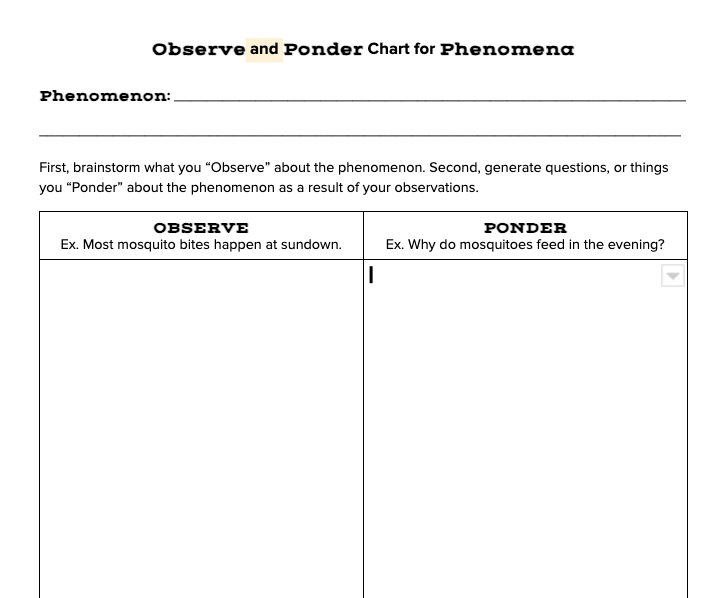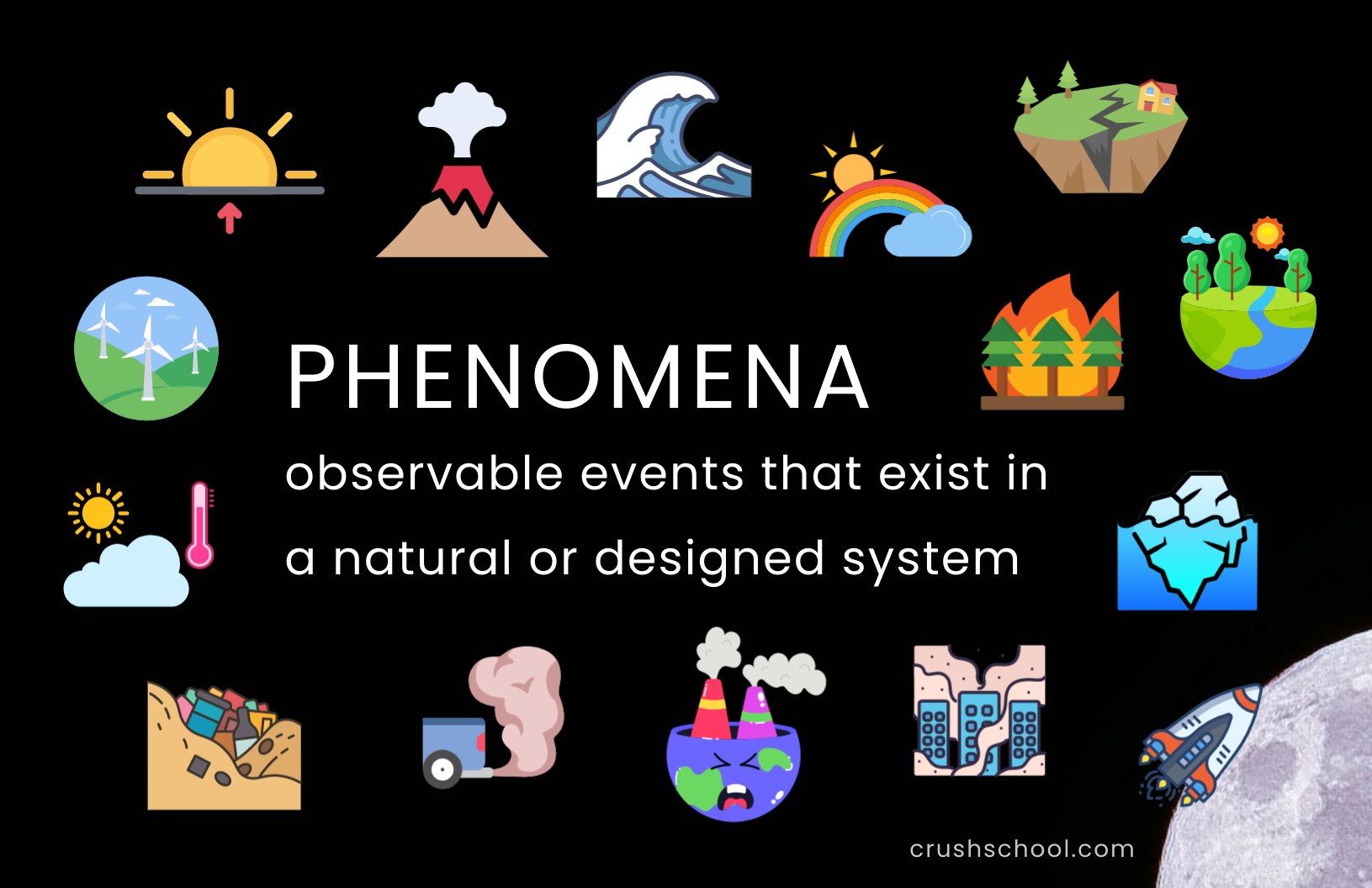Phenomenon-Based Learning: How to Break Down Phenomena
The ultimate goal of Phenomenon-Based Learning (PhenBL) is to help students develop skills necessary to solve real-world problems.
To provide meaning and context, PhenBL does away with passive strategies such as lecturing or reading about frequently abstract and difficult-to-relate-to concepts in favor of guiding students in active discoveries of the skills and knowledge required to solve real-world problems.
Phenomenon-Based Learning classroom
In a Phenomenon-Based Learning classroom, teachers look for real-world phenomena that represent the main ideas of the lesson or unit and use these phenomena as starting points lessons or units. Then, students interact with these phenomena to “solve” them - they investigate and find patterns, contrasts, causes, effects etc.
These “phenomena solutions” are achieved when students design their own ways to study and explain the whys and the hows of the phenomenon - they use provided resources (books, articles, the Internet etc.) and create products, such as visual or physical models, simulations, and experiments.
Teachers may choose to use these student-generated products as measures of student learning (performance assessments) instead of traditional tests.
Such a series of lessons is called a storyline and while storylines may vary depending on the topic or discipline, the idea that each part of the storyline should be driven by student questions and investigations makes it crucial for students to have a solid grasp on the phenomenon that starts each storyline. To this end, students must learn how to break down phenomena.
Breaking Down a Phenomenon
In my article Where and How to Begin with Phenomenon-Based Learning, I used a High School Earth Science phenomenon I named How Do Different Minerals Form? to help me create a plan for learning, but I posed this question to students: Each made of carbon; a diamond is forever, but graphite not so much. Why? The reason for showing images of diamond and graphite - two minerals all students should be familiar with and know some facts about - was to start the process of students connecting that while diamond and graphite are made of the same element carbon, they are different due to the conditions they formed in.
I realize that while investigating students could choose to focus on figuring out the processes and conditions related to graphite and diamond only so I might have to add extension lessons to help students learn and understand other ways in which minerals form. However, starting with this phenomenon is advantageous in two ways. For one, students can relate to it easily. Two, it gets the ball rolling on a major concept that temperature and pressure are key factors that affect mineral formation.
However, most students will most likely not know the specifics about diamonds and graphites and learning that they are both made of the same stuff should arise their curiosity and motivation to find out why. This might prompt them to grab their tech and start Googling, and it’s great if they want to do so, but I implore you to stop them, because you do not want superficial learning. You want in-depth, super kick-ass understanding and this requires strategy.
Observe and Ponder Chart is so oP y’all
I use the Observe and Ponder (OP) chart to help students break down a phenomenon. In small groups, they compile the two lists. First, they brainstorm and write down all of the the observations they have collected about the phenomenon. I always make the phenomenon image/video available to students in the LMS (learning management system ex. Google Classroom, Schoology etc.) our school uses, so they can review it as they complete the activity.
In the second column, students write down any questions that come to mind about the phenomenon and the observations they’ve made. These questions help direct student investigations.
The goal of the Observe and Ponder activity is to teach students a strategic way of looking at different phenomena and ultimately to help them become better at investigating and solving problems.
Taking it further: Looking at Phenomena as a class
At this point, you may allow students to start their investigations, or, if you feel they’d benefit from peer and teacher feedback, you may want to facilitate a class discussion during which students share their observations and questions they’ve generated. This provides an additional scaffold - especially useful at the beginning of the school year - that allows students to see if they are on track.
Creating a class OP chart allows you to compile and combine observations
SHD (Subtle Hint Dropping) is an additional tool you can use to aid the phenomenon breakdown process. It is extra helpful when you find glaring omissions in the Ponder column or when working with younger students who experience more difficulty in converting observations into questions to investigate. Basically, point to the specific observation in the class OP chart and ask students if anything else comes to mind that may be important to look into. You may also ask them to make an inference, or guess the reason for this observation.
And if all fails, do a think-aloud during which you tell them what you’re looking for but you don’t just give them the answer - you demonstrate your thinking process step by step that got you to it.
Why Your Phenomenon-Based Learning Future is Bright
As students participate in PhenBL activities throughout the school year and become more comfortable with Phenomenon-Based Learning and gain more confidence in their ability to deconstruct phenomena (aka becoming more OP at school and life), you can remove the scaffolds and let students guide themselves and collaborate with others.
Handing control over to the students will require that you “be in the space” with them so you can scrutinize and support their work. Just make sure you’re kind in your guidance, you have fun, and you occasionally strike up a random conversation, because they’ll appreciate the small brain breaks this provides and they’ll find out that you’re human after all. They will also enjoy having you around.
Play your cards right and you’ll become the OG who’s pretty OP. And that’s a dub and a wrap.
Sign up for my Teaching Tips, Resources, & Ideas Newsletter to get the next PhenBL post when it drops. It’ll be about Creating a Common Learning Experience for Difficult Phenomena and is free.
BOOKS & TOOLS
- September 2025 2
- August 2025 5
- July 2025 4
- June 2025 2
- August 2024 2
- July 2024 2
- June 2024 1
- October 2023 1
- September 2023 3
- August 2023 6
- July 2023 6
- July 2022 2
- June 2022 1
- November 2020 3
- October 2020 3
- April 2020 1
- March 2020 5
- July 2019 1
- June 2019 1
- April 2019 1
- January 2019 1
- November 2018 3
- October 2018 2
- September 2018 1
- August 2018 8
- July 2018 11
- June 2018 4
- May 2018 5
- April 2018 2
- March 2018 4
- February 2018 5
- January 2018 3
- December 2017 1
- November 2017 5
- October 2017 7
- September 2017 6
- August 2017 5
- July 2017 3
- June 2017 10
- May 2017 7
- April 2017 7
- March 2017 15
- February 2017 12
- January 2017 13
- December 2016 15
- November 2016 8
- October 2016 7
- September 2016 12
- August 2016 14
- July 2016 10
- June 2016 13
- May 2016 10
- April 2016 8
- March 2016 5
- February 2016 7
- January 2016 6
- December 2015 5
- November 2015 8
- October 2015 2

















